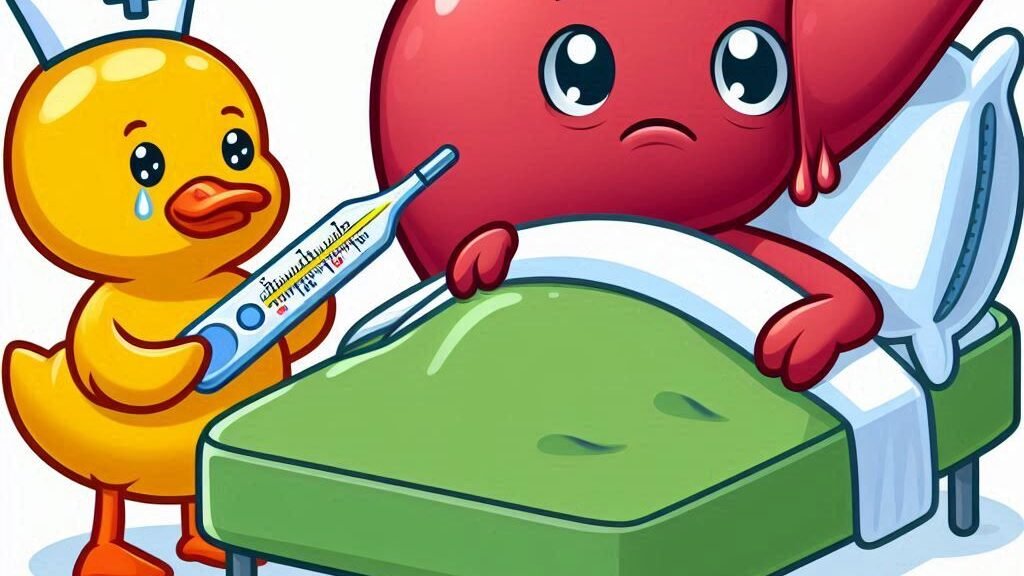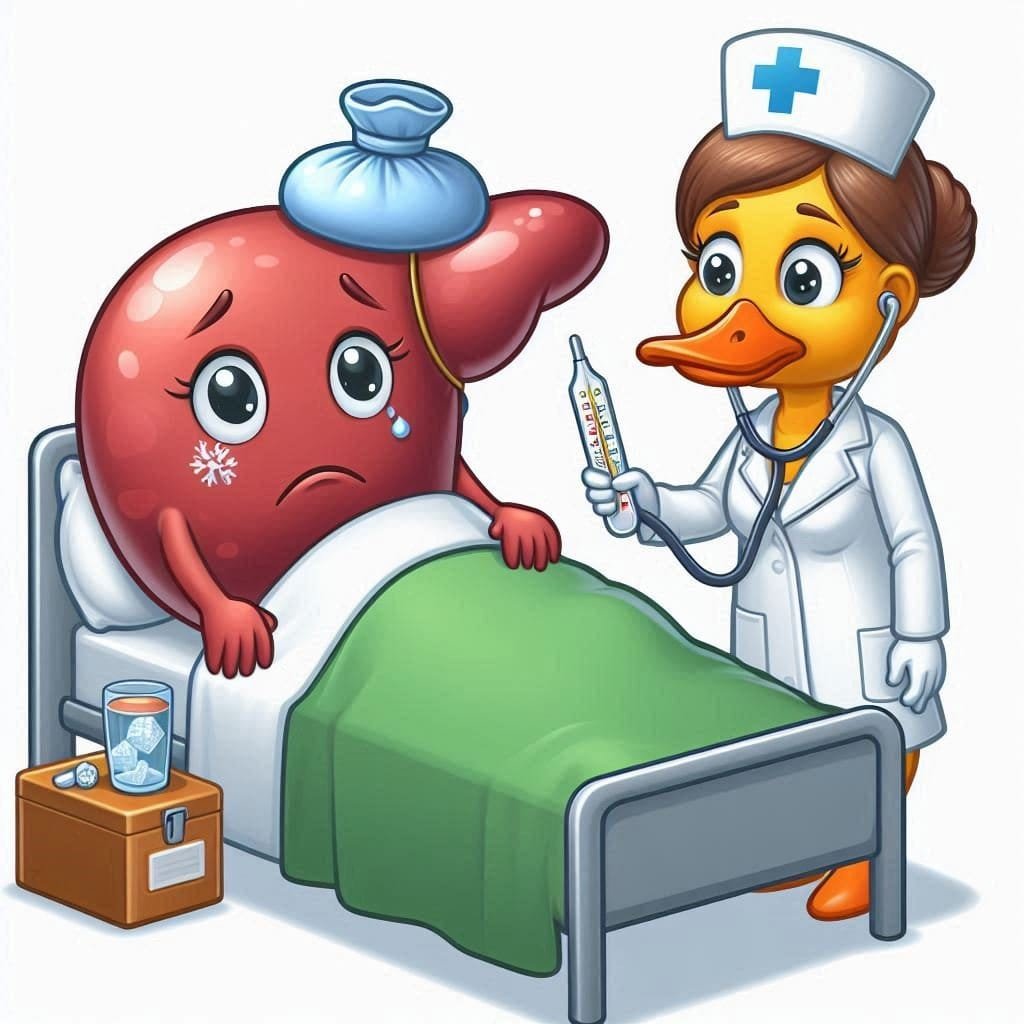Hepatitis
Hepatitis, a term that in a real sense means ‘inflammation of the liver’ is a concern that disturbs the majority of people about the world. Even though many of us have heard about hepatitis, only a few really understand it and the impact it can well have on our health.
This article aims to provide information on this important topic using the insights and findings from different kinds, its causes, effects, available treatments, and preventive methods.

What is hepatitis?
Essentially, it is a condition characterized by an inflammation in the liver. In fact, our liver’s purpose is to get rid of blood toxins daily. A surge in the amount of heavy toxins or a virus can reduce that capacity of the liver to filter.
It can be acute (for a short period) or chronic (long standing), and it can range anywhere from a bad flu to a dangerous illness. Knowledge of it is necessary for noticing its consequences in time and searching for a suitable therapy.
Types
There are a few kinds of it, each with its own qualities:
- Hepatitis A and E: Mostly caused by consuming contaminated food or water.
- Hepatitis B, C and D: transmitted through bloodborne pathogens, sexual fluids, and any other body fluid that contains blood.
Note that, Hepatitis B can be also transmitted from mother to child during birth.
These are the most popular categories; in any case, there are other categories of it, for instance, immune system hepatitis and drunkard hepatitis.
Causes
The reasons for it change contingent upon the kind:
- Viral diseases: One of the best-known causes of it is responsible for types A, B, C, D, and E.
- Excess Alcohol Consumption: Also called Alcohol-induced hepatitis
- Certain medications: Usually caused by Over-the Counter medication such as Non Steroidal Anti inflammatory Drugs (NSAIDs) or Acetaminophen. Sometimes prescription medications such as Antibiotics, medications used for lipid lowering or Statins and anti seizures medications. Recreational drugs and some herbs and supplements can also cause the disease.
- Autoimmune: Immune system reaction whereby the immune system by mistake attacks normal liver cells.
- Different poisons: Contact with particular artificial chemicals or toxins makes the skin’s surface and certain body tissues permeable.
- Other causes may include:
- Steatohepatitis: Which is due to fat in the body which is a later stage of fatty liver disease.
- Cholestasis: due to bile duct obstruction
- Ischemic: Due to loss of blood supply to the liver, which can be secondary to blood clots or a state of shock.
In this regard, it is very important to understand these causes for a proper prevention and management of risk factors.
Symptoms
Its signs and symptoms can more often than not be visible, and its impact can easily be mistaken for something else. Normal signs include:
- Exhaustion and malaise
- Upper abdominal tenderness (especially on the right)
- Nausea and Loss of appetite
- Mild fever in case of viral type
- Itchy skin or Pruritus
- Yellow colored skin and eyes also called Jaundice.
- Pale stools and/or dark urine
- Sometimes confusion and disorientation
One is pleased to know that some people with it, whether just starting out, may not show any signs. That having it makes normal check-ups as well as screenings crucial, particularly to those under higher risk.
Diagnostic and Treatment
Identification of it also often entails blood count to really see liver capacity and to identify certain viral types. At times, imaging tests or liver biopsies are required from time to time.
- Liver function tests or LFTs: Blood tests to measure different cells
- Liver Biopsy: Sampling a small tissue of your liver to check the possible causes
- Liver Imaging: To see the size and the bile duct. Usually involves liver and spleen scan, sonography.
Treatment for it differs in view of the sort and seriousness:
- Hepatitis A: In general, it can be stated that we can go for settling it all alone with rest and steady consideration.
- Hepatitis B: Intense cases mostly remit spontaneously; chronic cases may necessitate anti-viral drugs.
- Hepatitis C: However, because many of the patients have been treated with antiviral medications, some have achieved fixed rates for treatment.
- Hepatitis D: It is their way of like with like interferon treatment more like it!
- Hepatitis E: It may in most people settle on its own.
For non-viral kinds of it, treatment may comprise changes in lifestyle, prescriptions to manage lipids or dealing with underlining factors.
In severe cases of it in which the liver is entirely affected, a liver transplant could be required.
Prevention Methodologies
It is therefore paramount that preventing it is addressed to maintain general wellbeing. Here are a few key procedures:
- Immunization: Specific A and B antibodies are available.
- Practice great cleanliness: Wash their hands thoroughly, especially after going to the toilet and before handling foods.
- Safe sex practice
- Try not to share individual things. Avoid the sharing of shaving utensils such as razors and toothbrushes as well as syringes.
- Be mindful of tattoos and piercings. Ensure that it is sterile equipment that is being used
- Limit alcohol consumption: Alcohol consumption has been cited as having adverse effects, especially when it is taken in excessive proportions, translating to a heavy drinker.
- Be cautious with medications. Abide with dosage instructions and endeavor not to mix the drugs with liquor.
- Manage Factors like Blood Glucose and Lipids

Living with
For those who are diagnosed with chronic ,it is imperative to continue with a healthy lifestyle. This incorporates:
There are so many things that people take without much thinking, and therefore it’s very important to try as much as possible to keep a fair eating regimen.
- Exercising consistently
- Staying clear of alcohol and cigarettes
- Overseeing pressure
- Making sure you are having regular, routine visits with your provider and making sure you follow plans.
If these considerations are really taken care of, most patients can live complete, proactive lives.

Conclusion
It, in its different structures, remains one of the key global health issues. However, with the increased awareness, better treatment methods, and effective prevention measures, we are gradually coming up with ways of fighting this disease. It is very crucial to recognize —its causes, impacts, and medications—each time to safeguard ourselves and other people from its influence.
In this way we can continue with our existence while sidestepping the significant danger that once posed to our general wellbeing by being informed, by rehearsing counteraction, and by looking for early treatment when possible. Remember, the liver is one of your basic organs; handling it denotes handling your overall health and well-being.
FAQs
Am I ever capable of getting hepatitis from sharing food or drinks with a person who has the disease?
The risk of getting it through the sharing of food or even a bottle is in most cases manageable if one could take a chance. Hepatitis A can go around from mouth to mouth through contaminated food or water with ease; however, Hepatitis B and C are not easily transmitted through the channel. However, it is always good advice most of the time not to share personal items such as cutlery with a fellow who has hepatitis.
Is hepatitis curable?
Certain types of hepatitis are treatable, especially when the main cause is identified and addressed. Toxic and alcohol-related hepatitis can improve with the removal or avoidance of the harmful substance. In the same way, dietary and lifestyle changes can help manage metabolic dysfunction-associated steatohepatitis. While there’s no cure for some chronic hepatitis conditions, treatments can help mitigate inflammation and damage.



